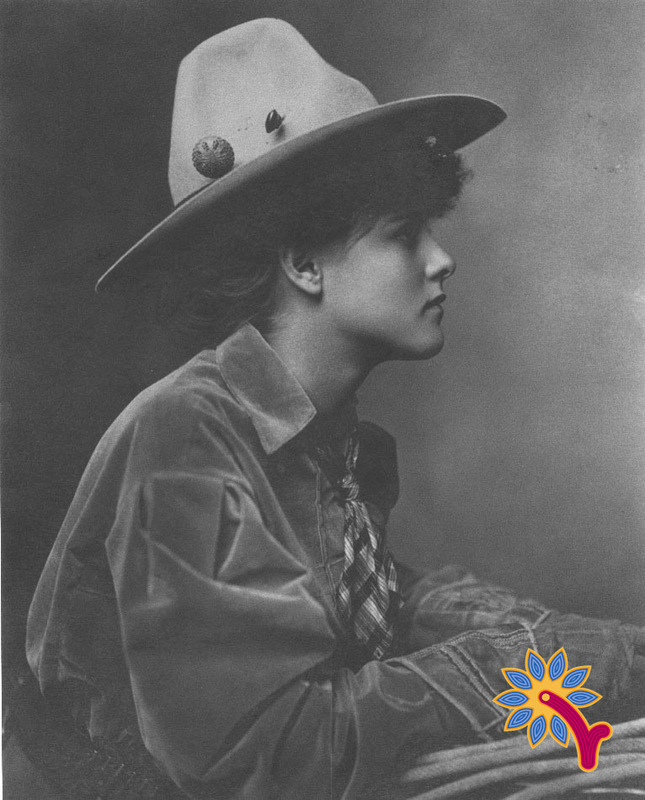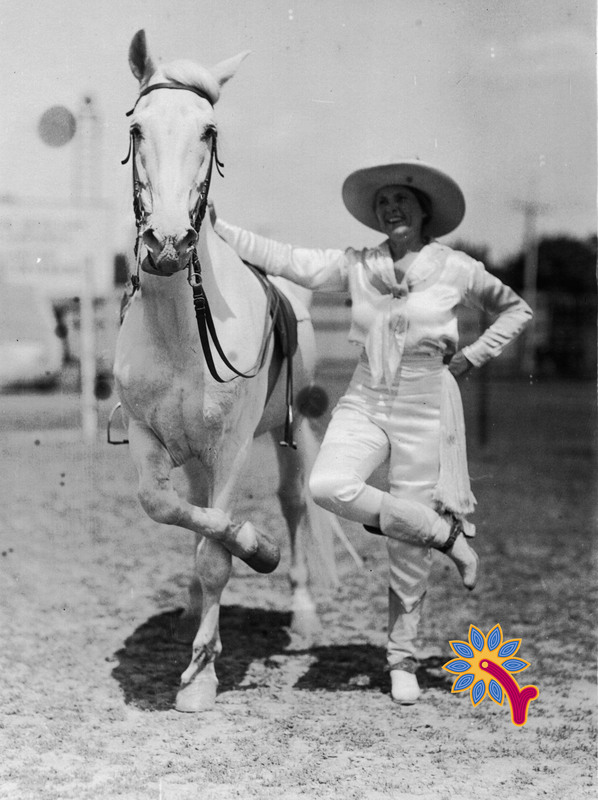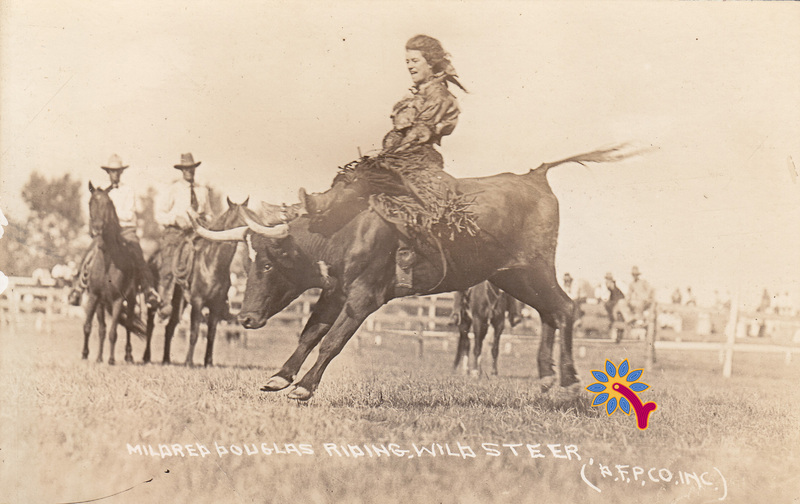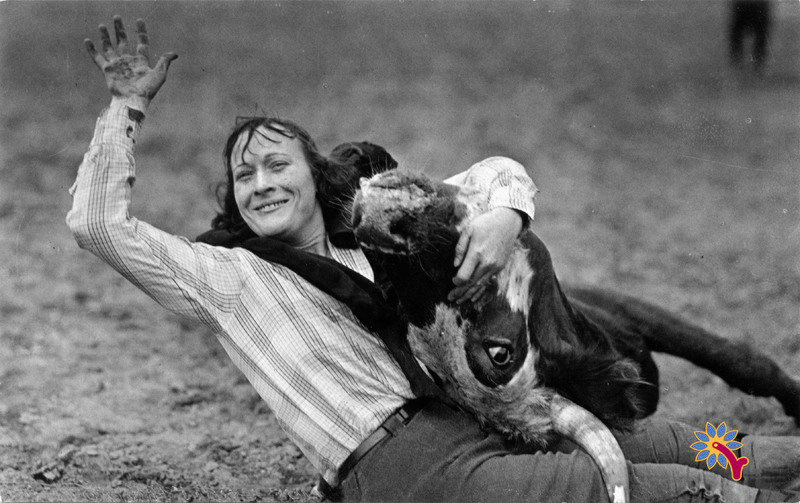Cowgirls Paving the Way
The cowgirl is a symbol that has been both an icon and severely overlooked. When one thinks of a cowgirl, what comes to mind the most is the rodeo stars we see on TV, or the distinctive fashion choices which include rhinestones and turquoise. However, being a cowgirl can be any woman responsible with the massive upkeep of rural living. A cowgirl can be anything from a rodeo rider, a rancher, cattle driver or be in charge on keeping up the books on the ranch. History largely talks about the women who became famous for doing what would typically be referred to as “men’s work” which has condensed many cowgirls of the past to become invisible, despite the popularity of their lore. Because of this, the cowgirl has become a romanticized tale.
Toughest in the West
In 1883, the famous cowboy and war hero, Buffalo Bill Cody, single handedly changed the western world when his Wild West show started to tour around the country. Buffalo Bill’s show was comprised of exciting attractions like mock bison hunts and Indian War reenactments, bronco riding and roping, and marksmanship competitions. Because of Buffalo Bill’s rising fame, a number of other copycats, like Pawnee Bill’s Wild West Show, the Miller Brothers’ 101 Ranch Wild West Show, and California Frank Hafley’s Wild West Attractions, were born. These shows toured the United States from 1905 to 1940. And while the shows did focus heavily on demonstrations of masculinity, women like Annie Oakley and Calamity Jane rendered themselves just as important by showcasing their “Wild West” skills to the spectators.
Mamie Francis Hafley
Frank Hafley’s show was famous for featuring women in rodeo events such as the infamous sharpshooting comedy routine. In this routine a cowgirl shot targets from the mouth or off the head of Mamie Francis who was Hafley’s second wife. One of the main attractions of the shows was an up and coming sport, which had questionable connections to the West at all. Horse diving was an event where a female rider and her horse jumped off a 50-foot tower, or diving board, into a small pool filled with water. This event took more valor than most all the other events combined, and only Mamie Francis had the courage to do it for many years. Between the years of 1908 and 1914, Francis and her horse, called Babe, successfully accomplished 628 dives from five stories up an unsteady wooden platform. While women were performing as a novelty in Wild West shows since the days of Buffalo Bill Cody, female and male sharpshooters and trick riders were often able to be interchanged but the horse-diving acts always had to use women riders, because the horses were only able to support riders up to 135 pounds.
Dominating in a Man's Sport
Woman participating in men-dominated sports isn’t as talked about today. The woman competing in rodeos now are most popular for their spectacular runs in barrel racing and the occasional female roper however, one cowgirl put woman competing in rodeo events on the map. Mildred Douglas Chrisman grew up on the East Coast and left her finishing school to travel west where she ended up joining the 101 Ranch Wild West show. This began an exciting career which was comprised of winning the World Champion Girl Bronc Rider title two times as well as acting in silent films alongside Tom Mix. Mildred was an extremely versatile performer and was exceptionally skilled in events such as: trick riding, trick shooting, and training performing animals like horses, lions, leopards, and other wild animals. After retiring, Mildred became a nurse and, later on, opened her own museum which highlighted her cowgirl life. In 1988 Mildred was inducted into The National Cowgirl Museum and Hall of Fame as an honoree.
Fox Hastings
Women can pinpoint their introduction into professional rodeo life all the way back to 1897 at the Cheyenne Frontier Days in Wyoming. This was a territory that was also one of the first to give women the right to vote 30 years before the 19th Amendment was authorized. By the year 1916, nearly 240 women were in the rodeo circuit as competitors. Fox Hastings was one of those women. Eloise Fox Hastings was one of the greatest female lady bulldoggers who ever lived. Competing in a man’s sport, she was known for extraordinary talents in events that were dominated by her male colleagues. Fox’s rodeo debut was in 1916 at Guy Weadick’s New York Stampede. Fox was trained by her husband, Mike, who was a champion steer wrestler, to bulldog and even though she didn’t compete against men frequently, in 1927 she competed against Bob Crosby in a steer-wrestling match in a heavy rainstorm. Crosby eventually won, but Fox gave him a run for his money. In early-days, Fox competed in all of the women’s rodeo events but was remarkably good at riding bucking horses and was considered to be a wonderful performer.
During this time, the world of rodeo wasn’t completely segregated from the outside and the woman had to endure a number of prejudices and taboos. One of the most prominent taboos in the rodeo world was women having a masculine aesthetic. Not only was this considered un-ladylike, but they were also accused of, what was then called, “perversion” which is known today as lesbianism. Because of this, female rodeo performers were vigilant in showing off their feminine sides. For many years, they actually preformed in skirts. Fox frequently sported ribbons in her hair and was recognized by the bandanna she adorned over her shoulders. Fox Hastings was inducted into the National Cowboy Hall of Fame in 1987. Her induction celebrated her career as a cowgirl competing successfully in a man’s world, which included steer wrestling, saddle bronc riding, and trick riding. And while the National Cowgirl Hall of Fame is comprised of about 50 rodeo stars, Fox Hastings is not among them.




